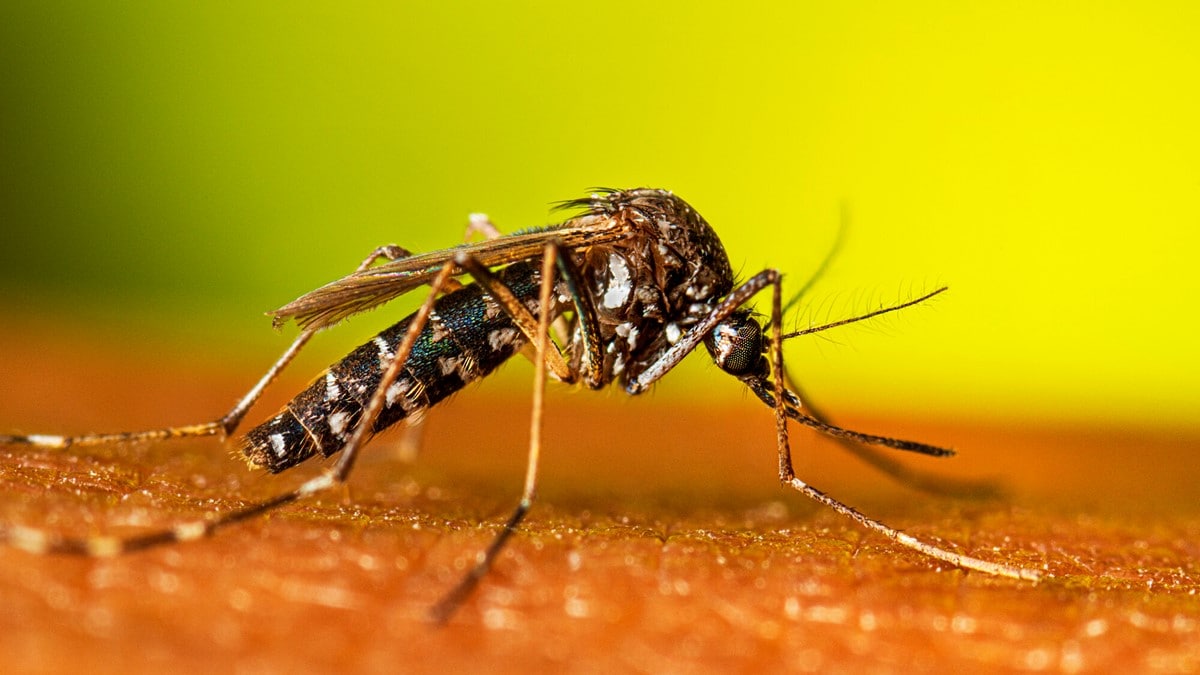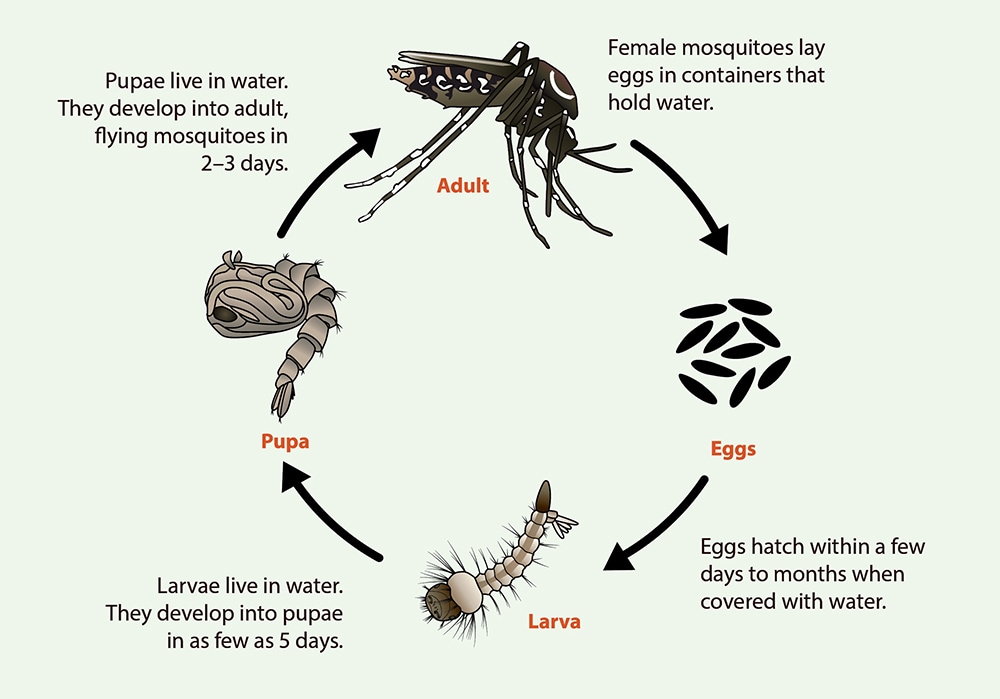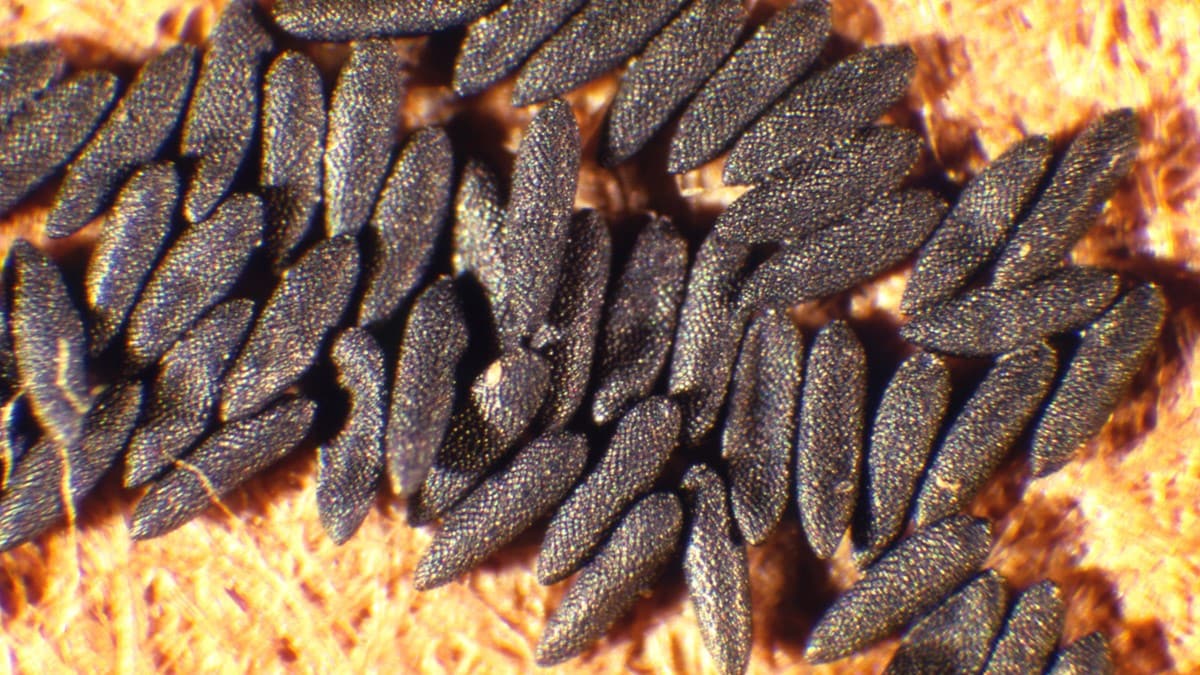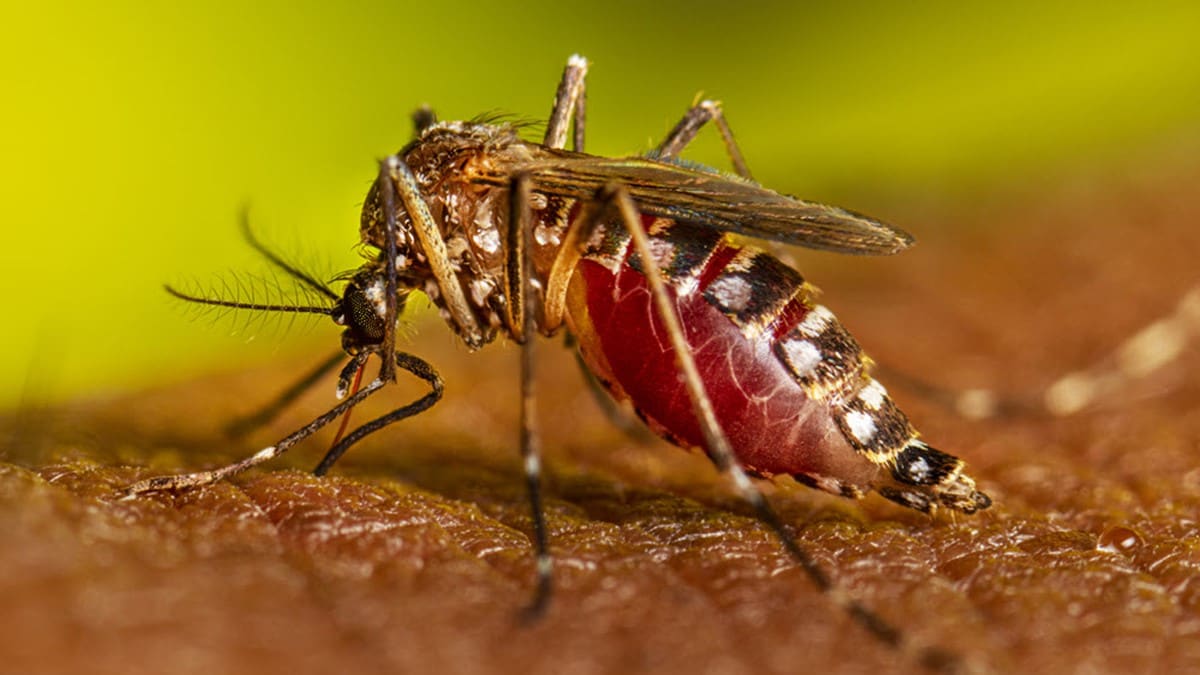At a glance
- Adult female Aedes mosquitoes lay eggs on the inner walls of containers that hold water.
- Larvae hatch from mosquito eggs and live in water.
- Larvae develop into pupae.
- Pupae develop into adult, flying mosquitoes.
- Adult female mosquitoes bite people and animals. Mosquitoes need blood to produce eggs.

Aedes species mosquitoes
Aedes aegypti and Ae. albopictus mosquitoes live in many areas of the United States. A mosquito egg takes 7–10 days to develop into an adult mosquito.

Life stages
Eggs
- Adult female mosquitoes lay eggs on the inner walls of containers with water, above the waterline.
- Eggs stick to container walls like glue.
- Eggs can survive drying out for up to 8 months.
- Eggs can even survive a winter in the southern United States.
- Eggs can survive drying out for up to 8 months.
- Mosquitoes only need a small amount of water to lay eggs. Bowls, cups, fountains, tires, barrels, vases, and any other container storing water make a great “nursery.”

Larvae
- Larvae live in the water. They hatch from mosquito eggs. This happens when water (from rain or a sprinkler) covers the eggs.
- Larvae can be seen in the water. They are very active and are often called “wigglers.”

Pupae
- Pupae live in the water.
- Adult mosquitoes emerge from pupae and fly away.

Adult
- Adult female mosquitoes bite people and animals. Mosquitoes need blood to produce eggs.
- After feeding, female mosquitoes look for water sources to lay eggs.
- Aedes aegypti and Ae. albopictus don’t fly long distances. In their lifetime, these mosquitoes will only fly a few blocks.
- Aedes aegypti mosquitoes prefer to live near and bite people.
- Because Ae. albopictus mosquitoes bite people and animals, they can live in or near homes or in neighboring woods.
- Aedes aegypti mosquitoes live indoors and outdoors, while Ae. albopictus live outdoors.

